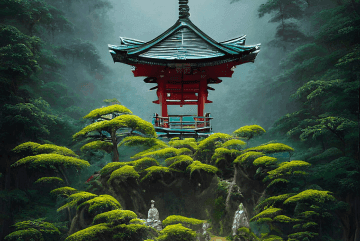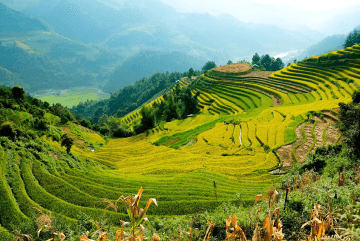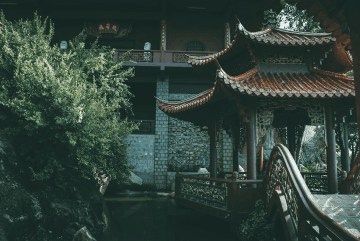Off-the-beaten-track adventures in Myanmar

Treks in Shan State - (Kalaw/Pindaya/Hsipaw)
Shan State offers splendid landscapes of mountains, tropical forest, rice fields and tea plantations – one of the best places for off-the-beaten track adventures in Myanmar. It also allows fabulous encounters with the ethnic groups that populate the villages of this region of Myanmar. Experiencing a guided trek is an excellent opportunity to meet the locals, discover lost monasteries and immerse yourself in the traditional culture of Myanmar.
A variety of 3-day treks are possible, generally venturing between the altitude station of Kalaw, which was very popular with the British during the colonial era, and the village of Pindaya where the extraordinary Pindaya caves are located. These caves house some 8000 Buddha statues in small rooms which follow one another in a veritable labyrinth. You can also explore the Hsipaw areaof Shan State and meet the little-known Palaung and Danu ethnic groups. A three-day trek also allows you to reach Inle Lake on foot from Kalaw.
During these treks, you stay overnight with the locals, a fantastic way to share the daily life of the Burmese, to cook and taste traditional dishes not found in mainstream restaurants. These hikes are the only opportunity to experience a night in a homestay with the locals. Elsewhere in the country, hotel accommodation is the only option permitted. If you are short on time, you can also go on a day hike from Kalaw or Hsipaw and adapt the duration of the walk to your physical capacities. In any case, these treks will allow you to experience authentic adventures in Myanmar. And you will, without doubt, be touched by the kindness of all the locals who will greet you as you visit Myanmar.
Southern Myanmar - (Hpa An - Mawlamyine)
The city of Hpa An stretches along the Thanlwin River in southern Myanmar. While the city itself is not of major interest, the surrounding countryside is definitely worth a visit, offering one of the most underrated adventures in Myanmar. The landscapes of this region are spectacular with its karst rocks and rice fields whose shades of green vary with the seasons and the light of the day. The landscapes are reminiscent of Halong Bay in Vietnam and Phang-Nga Bay in Thailand. While in the region, a must-see is the stunning Lumbini Garden which stands at the foot of Mount Zwe Ga Bin and features hundreds of statues of Buddha in golden robes.
Another must-see in this region are the caves of Saddar. We arrive first on foot, equipped with a flashlight, then we make our way back across the mountain in a boat - a splendid ride. Mawlamyine, formerly Moulmein, was the first capital of British Myanmar. A heritage of its colonial past, it has preserved many colonial buildings which today are very dilapidated and decayed, but still full of charm. Located along the Salouen River, the town is surrounded by lush mountains from which the golden arrows of stupas arise. The best spot to catch the sunset is Pagoda Hill, which overlooks the city. As the sun sets, the scenery is sumptuous, a peaceful moment to reflect on your adventures in Myanmar.
While in the area, you also have the chance to discover Gaungse Kyun, also known as “Shampoo Island”, because the kings during the Ava period came here to take advantage of the pure spring water from a well to wash their hair. Surrounded by lush nature, this small island is home to dozens of stupas and a monastery where monks and nuns still live. About twenty kilometers from Mawlamyine is the largest reclining Buddha in the world, a gigantic monument reaching 180 metres in length, definitely a highlight of your adventures in Myanmar.
The Golden Triangle - (Kengtung)
The Golden Triangle is the area where three border countries (Thailand, Laos and Myanmar) meet at the confluence of the Mekong and Ruak rivers. This name is legendary, reminiscent of the opium trafficking era and the abundance of poppies that have been grown there since the 19th century. Even if nowadays production has decreased significantly, it is still relevant because this is how the ethnic groups that populate this region of Myanmar earned their living. Kengtung is a pleasant town that serves as a base camp for exploring the Golden Triangle and other adventures in Myanmar. You can set out for a day excursion, on foot or by car, through the villages to discover the daily life of the Lwe, Palaung or Akkha ethnic groups.
Northern Arakan - (Mrauk U / Mount Victoria)
Much less known than Bagan, Mrauk U conceals sublime archaeological treasures. Located some 60 kilometres from Sittwe, Mrauk U is the ancient capital of the kingdom of Rakhine (Arakan) and the former centre of commerce between east and west in the 16th and 17th centuries. During this golden age, dozens of magnificent temples and pagodas were erected that today emerge in a lush landscape along hills and rivers. From Mrauk U, you can also go by pirogue on the river to meet the Chin ethnic group, an ancient animist ethnic group.
Another opportunity for an off-the-beaten-track experience, Mount Victoria is located in the Arakan Mountains. At an altitude of 3,070 meters, it is the highest point in Myanmar outside the Himalayas and boasts a splendid natural park full of birds and exotic flora – perfect for nature lovers who visit Myanmar. It is also a good starting point for exploring the customs and traditions of the Chin ethnic group, in particular, that of tattooing their faces.
The Himalayas - (Putao)
Putao is located in the very north of Myanmar, in the foothills of the Himalayas. In Putao, you can see Hkakabo Razi mountain, which rises to 5,889 meters and is snow-capped all year round. Different ethnic groups like the Kachins, Lisu, Bamar and Shan live in this region which is one of the least visited in the world. The expression "off-the-beaten-track”, while sometimes overused, takes on its full meaning here! One of the most authentic adventures in Myanmar, you can hike in the forest, crossing suspension bridges, to discover the fauna (monkeys, flying squirrels) and the flora (very beautiful orchids) and villages of the various ethnic minority groups.
Kayah State- (Loikaw)
Loikaw, perched 1,200m above sea level, is the capital of Kayah State, the smallest and poorest state in Myanmar, located in the centre of the country. Most of the people of Kayah country belong to the Karenni or Red Karen ethnic group (earning their name due to their red clothes). This state has long been closed to foreigners, making it one of the best-kept secret adventures in Myanmar. Today it is possible to reach Loikawen by plane or by car in order to visit the surroundings. You can reach the villages where the “long-necked women” of the Padaung ethnic group still live. It is a unique opportunity to meet this particular ethnic group, in authentic conditions, unlike some Padaung villages in Thailand maintained for tourist purposes.
Travel differently, travel better
Subscribe and receive our travel inspirations and practical advice twice a month.

Wanting to share your trip with a group?

















































